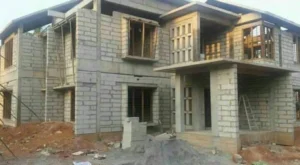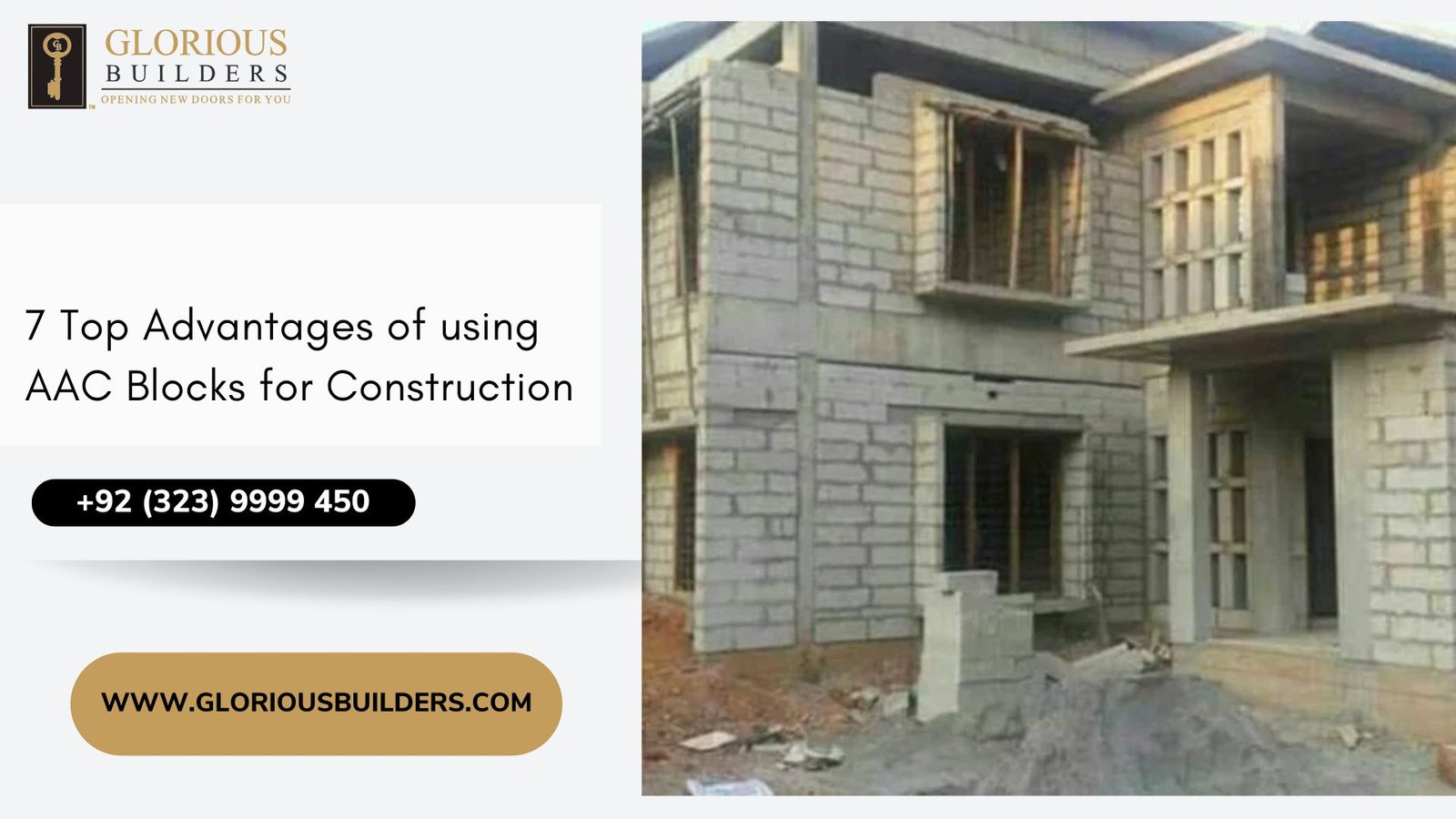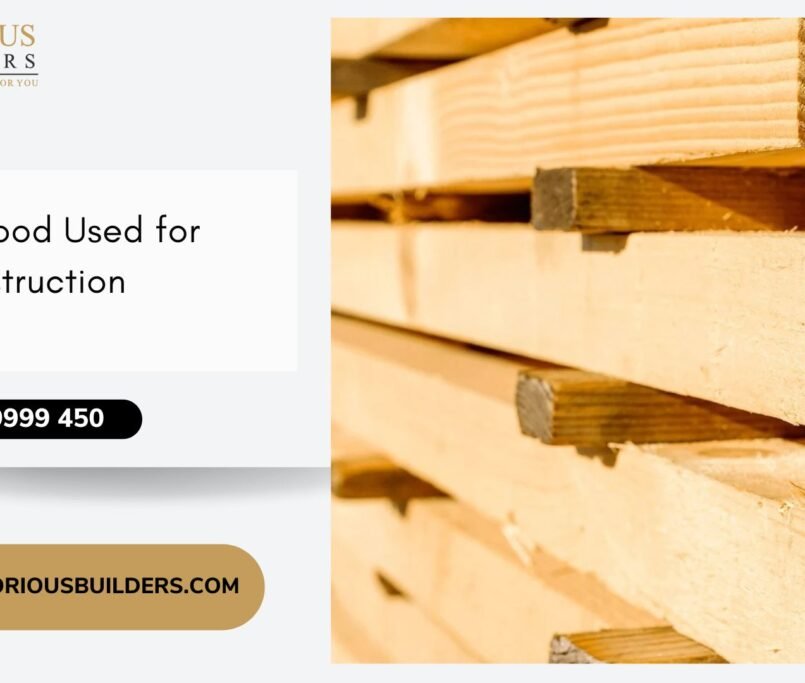7 Top Advantages of using AAC Blocks for Construction
 Building a home or a commercial property is one of the most significant investments you’ll ever make. It’s not just about creating a structure; it’s about ensuring that it stands the test of time, reflects your values, and meets modern standards of sustainability and efficiency. When it comes to constructing a dream home or a commercial building, choosing the right materials is crucial for durability, sustainability, and cost-efficiency. Today we’ll explore a somewhat popular and yet quite rare topic, “The Building Blocks” (or “bricks”). Especially “Which is better – AAC Blocks or Red Bricks? Sounds an offbeat topic compared to our other recent blogs, isn’t it? But it is one of the most popular topics for realtors, developers, and anyone who is generally interested in real estate and architecture. This debate is particularly relevant for those looking to build eco-friendly and resilient structures in today’s fast-evolving construction industry.
Building a home or a commercial property is one of the most significant investments you’ll ever make. It’s not just about creating a structure; it’s about ensuring that it stands the test of time, reflects your values, and meets modern standards of sustainability and efficiency. When it comes to constructing a dream home or a commercial building, choosing the right materials is crucial for durability, sustainability, and cost-efficiency. Today we’ll explore a somewhat popular and yet quite rare topic, “The Building Blocks” (or “bricks”). Especially “Which is better – AAC Blocks or Red Bricks? Sounds an offbeat topic compared to our other recent blogs, isn’t it? But it is one of the most popular topics for realtors, developers, and anyone who is generally interested in real estate and architecture. This debate is particularly relevant for those looking to build eco-friendly and resilient structures in today’s fast-evolving construction industry.
At Glorious Builders, we understand the importance of making informed decisions about construction materials. Whether you’re a homeowner planning a new project or a contractor managing large-scale developments, understanding the pros and cons of AAC Blocks versus Red Bricks can save time, money, and effort. But before we make the comparisons let’s first check out our contenders, AAC Blocks or Autoclaved Aerated Concrete blocks and the traditional Red Bricks.
Understanding AAC Blocks
AAC Blocks, developed in the early 1920s are getting immensely popular both across both rural and urban construction. AAC Blocks are considered to be the better alternative and a more sustainable option as compared to the traditional ones including several types of bricks. What are AAC Blocks? AAC or Autoclaved Aerated Concrete blocks are a precast foam concrete building block which comprises of materials like calcined gypsum, quartz sand, cement, water and lime. As the name suggests, this mixture is moulded into blocks and are autoclaved under great pressure. This unique manufacturing process gives AAC Blocks their lightweight yet robust nature, making them a favorite among modern builders.
For those eager to start their construction journey with sustainable materials, contact our experts at Glorious Builders by calling +92 323 9999 450 to learn more about incorporating AAC Blocks into your project.
Why AAC Blocks Are Gaining Popularity
The rise of AAC Blocks isn’t just a passing trend—it’s a response to the growing demand for sustainable, efficient, and cost-effective building materials. Their lightweight nature makes them easier to handle, reducing labor costs and construction time. Plus, their eco-friendly production process aligns with the global push for greener building practices. At Glorious Builders, we’ve seen firsthand how AAC Blocks can transform projects, from cozy family homes to towering commercial complexes, by offering durability and energy savings.
Exploring Red Bricks
On the other hand, Red Bricks are one of the popular and widely used traditional building materials crafted out of burnt clay. Though Red bricks are widely used across the country, the recent years have seen quite a paradigm shift. The labor-intensive process of creating Red Bricks, coupled with their environmental impact, has led many to explore alternatives. Nowadays, we can find only AAC blocks or bricks in most of the construction sites both in urban and rural regions. Besides creating AAC bricks is lesser hazardous than the traditional clay bricks, which makes it a more viable as well as eco-friendly option for building your homes.
The Legacy of Red Bricks
Red Bricks have been a cornerstone of construction for centuries, valued for their strength and classic aesthetic. However, their production involves burning clay in kilns, which consumes significant energy and releases carbon emissions. This environmental toll, combined with seasonal production challenges, has prompted builders to seek alternatives like AAC Blocks. Still, Red Bricks hold a nostalgic charm for some, and their durability makes them a reliable choice for specific projects.
Why Choose AAC Blocks?
The shift toward AAC Blocks isn’t just a trend; it’s a response to the growing need for sustainable and efficient construction practices. Advantages of AAC Blocks over Clay Bricks include several key benefits that make them stand out. ACC Blocks has many advantages over Clay Bricks such as:
- Better Fire Resistance
The blocks and the materials used are extremely fire resistant. It is reported that AAC blocks can provide resistance to the flames for at least 6 hours and up to 1200 Celsius. This makes them ideal for buildings where safety is a priority, such as schools, hospitals, and residential complexes. - Faster and Easier Construction
One of the noteworthy features of AAC Blocks is that they are far lighter than other materials and does not compromise on strength or flexibility. It is said that they are 50 times lighter, which makes construction faster and more efficient. This lightweight property reduces labor costs and speeds up project timelines, a win-win for developers and homeowners alike. - Earthquake Resistant
As mentioned earlier, since it’s stronger and tougher than regular building materials, AAC Blocks have better durability and can handle tremors or greater seismic activities accordingly compared to conventional building materials like clay bricks. This is particularly important in regions prone to earthquakes, where structural integrity is non-negotiable. - Energy Efficiency
As Hydrogen is formed in the small pockets while constructing AAC Blocks which greatly enhances its insulation properties. Thus it can keep the temperatures warm in winters and cool in summer. This is also one of the reasons why AAC blocks are used in almost every locale. Homeowners can enjoy lower energy bills due to reduced reliance on heating and cooling systems. - Availability
One of the major drawbacks of red clay bricks and the greatest advantages of AAC blocks is the availability. AAC blocks are available throughout the seasons, while Indian monsoons and the rains pose a threat to the creation of red bricks. This consistent supply ensures that construction projects stay on schedule, regardless of weather conditions. - Pest Resistance
AAC Blocks are pest resistant, especially keeping away the common pests like rodents and termites as they are built using inorganic materials. This durability translates to lower maintenance costs over time, making AAC Blocks a smart long-term investment. - Sound and Moisture Proof
As mentioned earlier, because of the air pores and pockets in AAC Blocks, they excel in keeping out the moisture and in sound reduction too. This makes them ideal for urban settings where noise pollution is a concern or for homes in humid climates where moisture can lead to mold and structural damage.
Beyond the Basics: Additional Benefits of AAC Blocks
Beyond these core advantages, AAC Blocks are also easier to cut and shape, allowing for greater design flexibility. Architects love them for creating intricate designs without compromising structural integrity. Additionally, their uniform size and shape reduce the need for excessive mortar, further lowering costs. At Glorious Builders, we recommend AAC Blocks for clients who want to balance aesthetics, functionality, and sustainability in their projects.
Making the Right Choice for Your Project
So, folks, we hope you liked the article and understood the advantages of AAC Blocks over the red clay bricks. The choice between AAC Blocks and Red Bricks ultimately depends on your project’s specific needs, budget, and environmental goals. AAC Blocks offer a modern, eco-friendly solution that aligns with the global push for sustainable construction. Red Bricks, while traditional and reliable, may not match the versatility and efficiency of AAC Blocks in today’s construction landscape.
To explore how AAC Blocks can transform your next construction project, visit Glorious Builders for expert guidance. Our team specializes in helping clients choose the best materials for their unique needs, ensuring quality and sustainability every step of the way.
Get Started Today
Ready to build with AAC Blocks? Reach out to our team at Glorious Builders by calling +92 323 9999 450 to discuss your project and get a personalized consultation. Whether you’re constructing a cozy home or a large commercial complex, we’re here to help you make informed decisions.
The Future of Construction
The rise of AAC Blocks reflects a broader shift toward innovation in the construction industry. By choosing materials that prioritize sustainability, efficiency, and durability, you’re not only building for today but also contributing to a greener tomorrow. For more insights on modern construction trends or to source high-quality AAC Blocks, contact Glorious Builders today at +92 323 9999 450. Let’s build something extraordinary together.
Frequently Asked Questions
What Are AAC Blocks Made Of?
AAC (Autoclaved Aerated Concrete) Blocks are precast foam concrete blocks made from calcined gypsum, quartz sand, cement, water, and lime. These materials are molded and autoclaved under high pressure, creating lightweight, durable blocks ideal for modern construction. Learn more at Glorious Builders.
What Are Red Bricks Made Of?
Red Bricks are traditional building materials crafted from burnt clay. Widely used for centuries, they remain popular but are less eco-friendly compared to AAC Blocks due to their production process.
Why Are AAC Blocks Considered Eco-Friendly?
AAC Blocks are more sustainable than Red Bricks because their production is less hazardous and uses fewer natural resources. Their energy-efficient insulation properties also reduce reliance on heating and cooling systems.
How Do AAC Blocks Compare to Red Bricks in Fire Resistance?
AAC Blocks offer superior fire resistance, withstanding flames for up to 6 hours and temperatures up to 1200°C. Red Bricks are less fire-resistant, making AAC Blocks a safer choice for buildings.
Are AAC Blocks Earthquake-Resistant?
Yes, AAC Blocks are stronger and more durable than Red Bricks, providing better resistance to seismic activity. Their lightweight yet tough structure makes them ideal for earthquake-prone areas.
How Do AAC Blocks Improve Energy Efficiency?
AAC Blocks contain small air pockets that enhance insulation, keeping interiors warm in winter and cool in summer. This reduces energy costs compared to Red Bricks, which lack similar insulating properties.
Are AAC Blocks Available Year-Round?
Unlike Red Bricks, which can be difficult to produce during monsoons, AAC Blocks are available throughout the year. This ensures consistent supply for construction projects, regardless of weather.
Do AAC Blocks Offer Pest Resistance?
AAC Blocks are pest-resistant due to their inorganic materials, repelling rodents and termites. Red Bricks, being clay-based, are more susceptible to pest damage over time.
How Do AAC Blocks Help with Sound and Moisture Control?
AAC Blocks have air pores that reduce sound transmission and prevent moisture buildup, making them ideal for noisy or humid environments. Red Bricks offer less sound and moisture resistance.
Where Can I Get Expert Advice on Using AAC Blocks?
For guidance on incorporating AAC Blocks into your project, visit Glorious Builders or contact their team at +92 323 9999 450 for a personalized consultation.
Ready to Build Smarter?
Choosing the right building material can make all the difference in creating a home or commercial space that’s safe, sustainable, and cost-effective. AAC Blocks offer a modern solution that outperforms traditional Red Bricks in nearly every aspect, from energy efficiency to environmental impact. Let Glorious Builders guide you through the process, ensuring your project is a success from foundation to finish. Call us at +92 323 9999 450 to start building your future today.
Glorious Builders
DHA Construction Company in Lahore Get Direction
Bahria Town Construction Company in Lahore Get Direction






